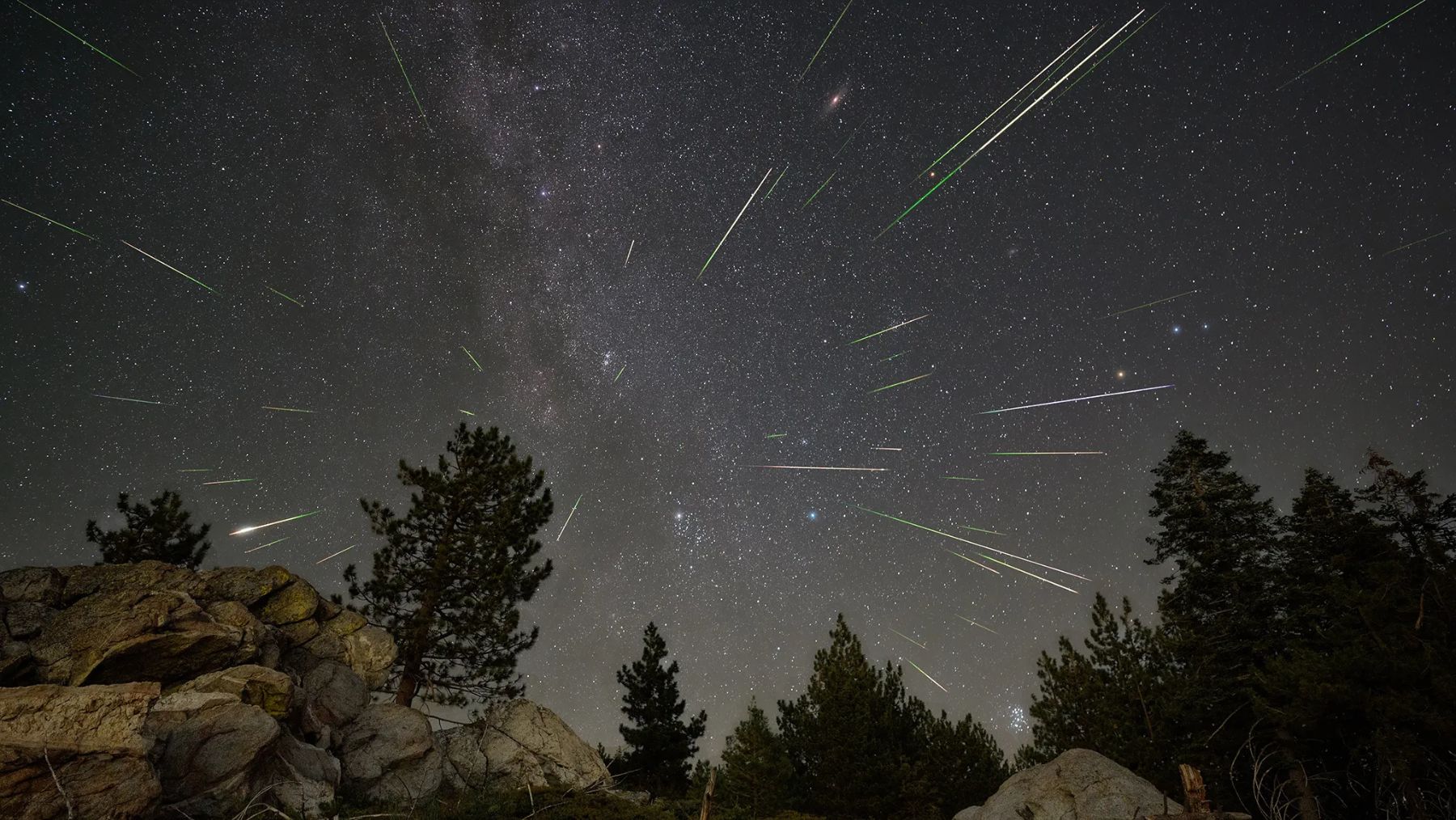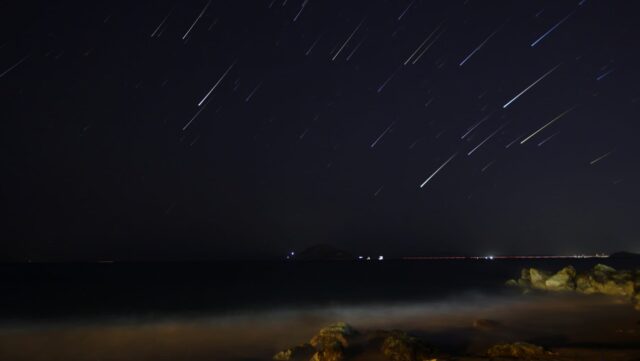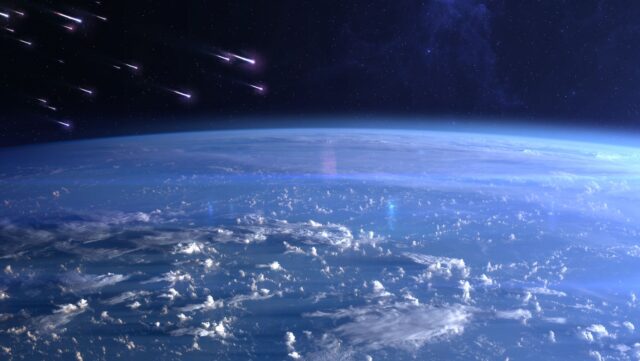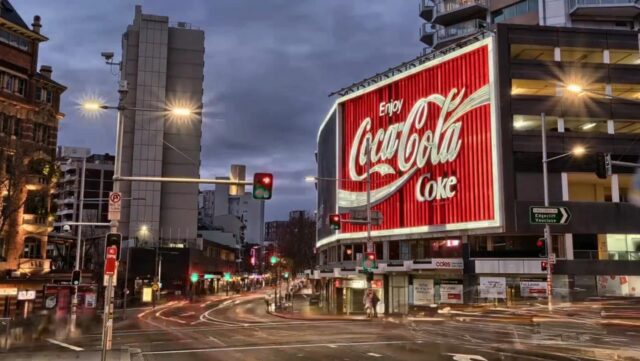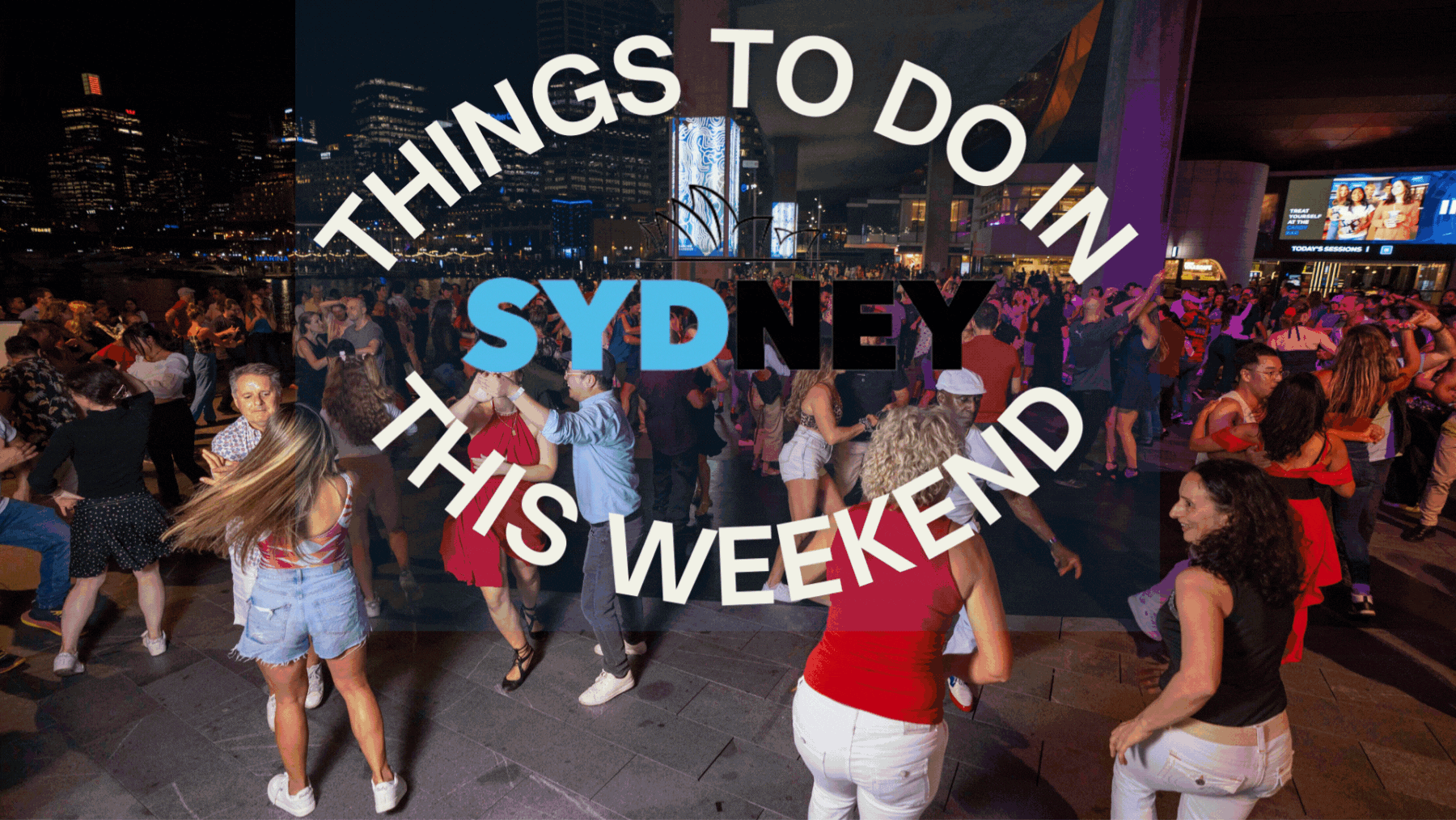- The Perseids meteor shower is one of the brightest of the year with up to 110 meteors per hour expected.
- Sydneysiders can catch the peak around Tuesday, August 12 into Wednesday, August 13.
- These are the best viewing spots and methods to improve your chances of catching a sighting.
While our attention is currently fixed firmly on Sydney’s waters, with humpback whales and dolphins getting everyone talking, you’ll want to shift your gaze skywards in a few weeks. The Perseides meteor shower occurs every year between July 17 and August 24, peaking around mid-August. Read on to find out when it’ll peak over Sydney and how to improve your chances of catching a glimpse of the meteors.
When can I see the Perseids Meteor Shower in Sydney?
Activity is expected to peak above Sydney on Tuesday, August 12 and Wednesday, August 13, 2025. NASA recommends watching out for the Perseids in the pre-dawn hours, when the sky is darkest, but they can sometimes be seen from around 10pm.
What is the Perseids Meteor Shower?
The Perseids are made of debris from the Swift-Tuttle comet. It takes 133 years for the comet to complete one full orbit of the Sun but, as it does so, it passes Earth one a year, leaving a trail of dust in its wake. It’s this trail that collides with our atmosphere, where debris disintegrates and creates fiery streaks in the sky. Those meteors we’ll hopefully catch a sighting of.
Swift-Tuttle is a huge comet. Its solid, icy core measures 26 kilometers across — that’s more than twice the size of the object estimated to have caused the extinction of the dinosaurs.
Such a large comet leaves a large trail in its wake, which is why the Perseids are widely sought after by astronomers and stargazers. The Perseids are known for their fireballs, so are a dramatic thing to spot in the night sky.
Up to 110 meteors per hour can be seen in peak conditions.
Top tips for seeing meteors
1. Get away from city lights
Finding a secluded spot, away from bright city lights gives you the best chances of seeing a passing meteor or two. Too much light pollution (or moonlight, actually) can distort visibility. Scroll down to find some of the best skygazing spots in Sydney and the surrounds.
2. Use your eyes (no, really)
Don’t rely on you camera to capture the action. It can take up to 20 minutes for your eyes to adjust completely to the darkness, and staring at an LCD screen won’t help at all. You don’t need any special gear either, especially not for the bright Perseids. Lie down and keep your eyes fixed on the sky, taking in the 180-degree views your eyes offer (that telescopes don’t).
If you do want to bring some form of apparatus, opt for binoculars. They’re convenient, usually come with a lower price tag than a telescope, and show you a wider area of the sky too.
3. Dress for the weather
Check conditions before leaving — you’ll want to note the cloud cover for visibility anyway — and make sure you’re comfortable and ready to stay out for a while. Bring a blanket, warm clothes and maybe even a chair or mat to lie on. Meteor watching can be a waiting game.
You can also download the Sky Map app to monitor conditions so you don’t head out for disappointment. It can also help you choose the best location for the meteor show.
Best places for skygazing in Sydney
1. Bondi Beach
If completely accuracy doesn’t concern you, then it’s fine to stick fairly close to the city as long as there’s lower light pollution. And if you’re doing it for the ‘Gram, you’ll want a great backdrop to accompany your best amateur shot.
It doesn’t get much better than Bondi Beach, which offers beautiful (and uninterrupted) sky views over the water, and hopefully a few meteors to boot, if the clouds stay away.
Address: Queen Elizabeth Dr. Bondi Beach New South Wales 2026
2. Mangrove Mountain
If you really take your skygazing seriously, you’ll need to travel about 90 minutes outside of Sydney CBD to a place called Mangrove Mountain. This spot is located inland from the Central Coast near Peats Ridge.
You’ll typically find Sydneysiders from niche “astro societies” out there. It’s a secret stargazing spot amongst many enthusiasts so just be prepared to get a few glowering looks once they sniff out a tourist.
Address: Waratah Rd, Mangrove Mountain NSW 2250
3. Linden Observatory
Suitable, accessible sites for astrology are shrinking as more environmental conditions start encroaching on dark sky spaces. The Blue Mountains used to be full of incredible stargazing spots. Now there’s only a few. If you’re heading out to the Mountains, your best bet is the area in and around Linden Observatory.
Katoomba was once the best stargazing spot in Sydney but amateur astrologists have been sticking to Liden lately. It’s become such a haven for night viewing that local astronomy groups are currently working with the Blue Mountains City Council to establish a Dark Sky Park there.
Address: 105 Glossop Rd, Linden NSW 2778
4. Ku-ring-gai Chase National Park
A nice middle-ground is Mount Ku-ring-gai. It’s only a 45-minute drive outside of Sydney CBD, making this one of the closest skygazing spots to the city.
Park your car and head to the football park on the edge of Ku-ring-gai Chase National Park. This is generally where you’re going to get the best, uninterrupted view so you’ll find a lot of photographers snapping set up on the oval.
Address: 688 Ku-ring-gai Chase Road, Mount Colah, NSW 2079
5. Sydney Observatory
While it’s advised to get away far away from the bright lights of Sydney CBD as possible, Sydney Observatory at Millers Point is a fantastic place for some skygazing. Join a one-hour guided tour (Wednesday–Sunday) to learn about the historic building and climb to the dome to see historic and modern telescopes in action. From this location you can get spectacular views across Sydney Harbour and see terrestrial objects through a telescope.
Tours run until 9:30pm so may be a little early for the Perseids, but still well worth the visit.
Address: 1003 Upper Fort St, Millers Point NSW 2000

